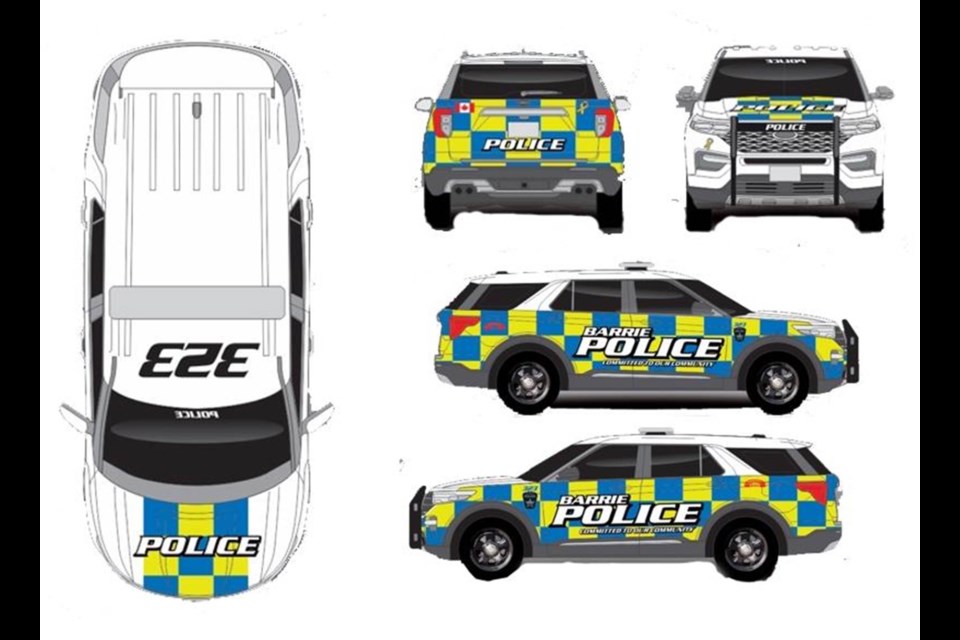Research by the Barrie Police Service is pointing to a brighter future.
During a presentation on evidence-based policing Thursday, Insp. Rich Johnston told police services board members that visibility plays a key role in policing and how officers are perceived by the public.
Pointing to a bright, colourful police cruiser and a bright safety-type vest, Johnston said visibility and perception are important considerations in policing.
“We’re looking to challenge our members. We want them to look at things differently, to challenge assumptions and question long-held beliefs,” Johnston told board members.
City police secured provincial funding two years ago to use research to develop an evidence-based police unit with the purpose of deploying front-line officers more effectively, when and where they are needed most.
Through this program, police members have been presented with a weekly question, followed up by a page of facts based on research and the results of the polled officers.
Among those topics were cruiser design and high-visibility vests.
Officers were asked about their thoughts of the lime-green/yellow and retro-reflective markings of the Battenburg design on police cars compared to the current design and which one they would feel safer in.
“This is one of the most visible aspects of our organization within the community,” Johnston told the board, referring to police cars.
Research shows the bright colours are the most visible, and becomes more conspicuous with the fluorescent markings, he added.
That aligns with the goal of being a visible and approachable police service, Johnston said.
“We want to be seen,” he said. “We know that we alter drivers’ behaviours when they see us, so how do we be seen more?”
Officers were also asked about their views on high-visibility vests. The next step in the exploration of the brighter image is to create a public survey to see what the public says about perception. Johnston explained later that a national poll will be circulated online with images of the brightly designed police cruiser.
“We are a public safety organization. We want the public to see us and want to approach us,” he said. “This is beyond simple officer safety.”
Research, he added, found that the bright vests leave the public with the perception that they are more friendly, approachable, respectful, accountable and competent and less aggressive, which he said are all worthwhile attributes worth exploring further.
Johnston later said the issues of visibility through the cruiser and vest came out as an during initial research. The car is considered the most visible sign of police.
If the polling of the general Canadian public, as well as Barrie-area residents, shows little support for the bright cruiser approach, the whole idea could well be jettisoned, Johnston said.
“If it comes back and it’s abhorrent to the public and they hate the idea of it… then we walk away from it,” he said. “It’s not about what we want or what we like, it’s what the research tells us.
“Historically, it’s only been experience; we’re looking at a far greater reliance on research.”
If, on the other hand, it’s deemed to be beneficial, the new look may become operational.
Other areas being explored through the questionnaires include crime concentration, shift work, domestic violence, trauma-informed police response, and women in policing.
In terms of the early findings, Police Chief Kimberley Greenwood said the initiative allows the sharing of research from around the world, which is complemented by a full-time researcher.
“We are dedicating resources in this area so we make evidence-based decisions,” she said, adding there is movement on some of the initiatives, including issues related to visibility in co-ordination with the strategic plan.






